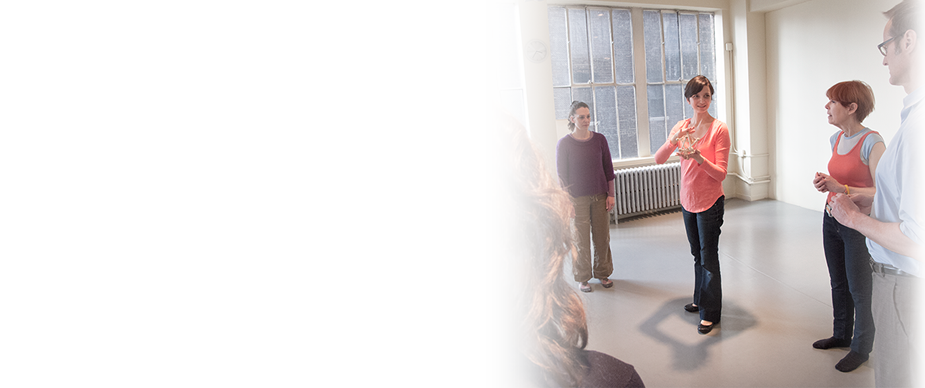Will New Sensor Device Help You with Your Posture?
/The following article and video about LumoBack appeared in yesterday's Wall Street Journal. LumoBack is a new, wear-able posture-sensing device. It's promoted as a digital "Mom" reminding you to sit up straight.
This device will remind you of how long you've been sitting, will count your steps and inform you of your sleep habits and it will tell you about how you are positioning yourself when sitting and standing. It buzzes when your posture is off and gives you more detailed feedback on the phone app, which include illustrations of correct posture.
All of this information could be very useful as we spend more and more time sitting and computing. On the topic of body position, an alert may tell us that we are slouching or leaning to one side or the other and will show us a stick figure sitting up straight on our smart phone screens. What it won't show us is how to physically sense our body position accurately. This sense is called proprioception or kinesthesia. There are proprioceptive nerves in our muscles that tell our brain what our body position is.
Try this: put your hand in back of you out of your frame of vision, but not touching any other part of your body. Do you sense where your hand is? That's your proprioception at work.
Proprioception is a sense that we rely on it all the time, but through repeated habits of holding ourselves a certain way, we distort this sense and train our brains to think that we're standing up straight when we're actually not.
Imagine that you have a proprioceptive compass that likely pointed north when you were a small child and as you've become accustomed to poor postural habits, your compass stopped pointing north. When you receive an instruction to sit up straight from Mom, from a friend, from yourself, or from a sensor device, you body responds to the idea, using a distorted compass as its guide.
The writer of the Wall Street Journal article tried out the Lumoback and reported that the device helps you know how to adjust your sitting or standing position. But it's unrealistic to constantly look at a screen to check your posture so most of the times I felt these vibrating nags, I had to guess how to improve my posture.
It is unrealistic for us to trust our own judgement regarding our body position, unless we've had some training to help us realign the compass that makes these judgements. If people rely on old habits, they will most likely attempt to imitate the images by stiffening, which may not be any more comfortable or sustainable than slouching. The writer also says:
I know it's good for me, but I don't necessarily enjoy it, says the writer.
Truly "good" posture should feel relaxed and comfortable. It should feel "good" and lead to what ever you are doing feeling more enjoyable and sustainable. If you retrain your body to sense your position accurately, improving your posture will feel like a breath of fresh air, rather than a chore.
Referring to a typical "momism", the writer goes on to say, LumoBack or no LumoBack, your mother will probably still bug you about your posture. So save her the trouble: Keep your shoulders back.
Nearly all of my students explain to me that someone has told them to keep their shoulders back. Most people have the idea that a military sort of posture of lifting the chest and pinning the shoulders back is the proper and healthy way to sit, stand, and counteract slouching. To combat the fear of slouching forward, most people actually end up "slouching" backward. Most peoples' idea of how to straighten up is incorrect and leads to additional problems.
Take a look in the mirror at yourself from the side. Hold your shoulders back will pin your shoulder blades together and down, causing tension in the upper and lower back, restricting the movement of your back ribs for breathing and also compressing the spine. When my students stop correcting in this way, they typically report relief of pain or discomfort in their backs, that it's easier to breath, and they feel more relaxed.
Here's an example of what I'm describing:
Here I am bending a plastic knife. The first photo mimics what we typically call "slouching" (dropping or pulling forward and down into the chest.)
The bottom photo mimics pulling the shoulders back. It looks like the same image, just flipped around with the "slump" in the opposite direction.
Though I think that Lumoback may help people become more aware of their posture and of how much time they spend sitting and walking it doesn't change help people with the kinesthetic confusion that often goes hand-in-hand with years of developing poor postural habits.
The purpose of the Alexander Technique is to re-educate the body to sense itself accurately, to get rid of the kinesthetic confusion and get the sensory compass pointing north. If used in tandem with Alexander Technique lessons, users of the Lumoback would be able to respond to the alerts from the device using an accurate sensory gauge. They would no longer have to "guess about how to improve their posture," as the writer of the article said she had to do when using the device.
Some of my Alexander Technique students say that they find it difficult to remember to remind themselves of what they've learned during their lessons when they are busy, especially when at work. I may mention this device to students who feel that they need an added reminder.
Have you tried the Lumoback device? If so, share your experience in the comments below.



